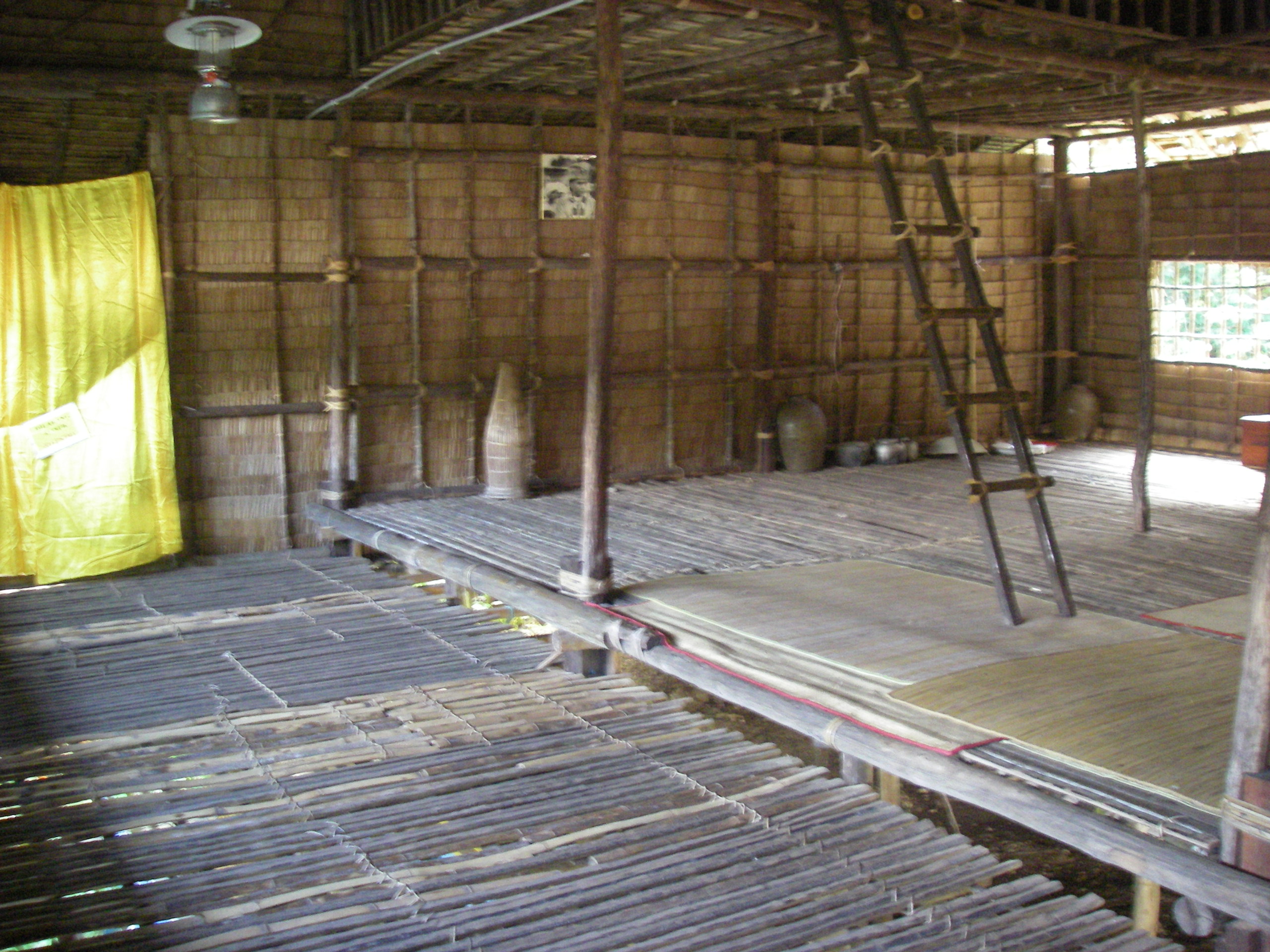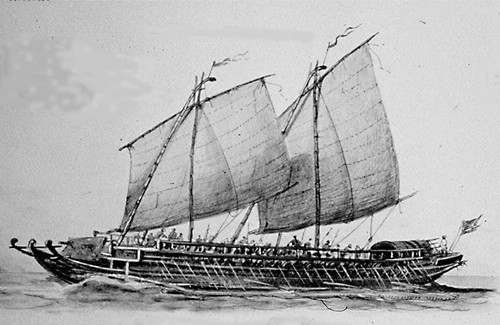Illanun people on:
[Wikipedia]
[Google]
[Amazon]
The Iranun are a Moro ethnic group native to
 The origin of the name "Iranun" remains contested. The "Iranun" (Archaism, archaic "Iranaoan") may have been the original endonym of the ancestral group which later split into the Iranun, Maranao, and Maguindanao people. The Iranun and Maranao still speak the language closest to the ancient Proto-Danaw among all of the Danao languages spoken by these groups.
The origin of the name "Iranun" remains contested. The "Iranun" (Archaism, archaic "Iranaoan") may have been the original endonym of the ancestral group which later split into the Iranun, Maranao, and Maguindanao people. The Iranun and Maranao still speak the language closest to the ancient Proto-Danaw among all of the Danao languages spoken by these groups.
 For centuries, the Iranun were involved in pirate-related occupations in Southeast Asia. Lanun means pirate in Malay language. Originally from the Sultanate of Maguindanao, in southern Mindanao, Iranun colonies spread throughout Mindanao, the Sulu Archipelago and the north and east coast of Borneo. Most Iranuns are Muslim. Their language is part of the Austronesian languages, Austronesian family, and is most closely related to the Maranao people of Lanao (province), Lanao. Historically, the Iranun were given the exonym Ilanun (also spelled variously as Illanun, Illanoan, Illanoon, Ilanoon, etc.) during the British colonial era. The Malay term ''Lanun'' or pirate originated from the exonym.
In the case of inter-marriages of an Iranun woman and an outsider man, the cultural influences of the woman's family will be more dominant that the outsider man would be considered as an Iranun man; although in a lot cases this does not happen.
The Sultanate of Maguindanao traces its ancestry to Iranun roots. For several centuries, the Iranuns in the Philippines formed part of the Sultanate of Maguindanao. In the past, the seat of the Maguindanao Sultanate was situated at Lamitan and Malabang, Lanao del Sur, Malabang. Both of which were the strongholds of the Iranun society. Iranuns fought the Western invaders under the flag of the Maguindanao Sultanate. They formed part of the Moro resistance against the USA occupation of the Philippines from 1899 to 1913. The Iranun were excellent in maritime activity as they are traditionally sailors and pirates. They used to ply the route connecting the Sulu Sea, Moro Gulf to Celebes Sea, and raided the Spanish held territories along the way.
For centuries, the Iranun were involved in pirate-related occupations in Southeast Asia. Lanun means pirate in Malay language. Originally from the Sultanate of Maguindanao, in southern Mindanao, Iranun colonies spread throughout Mindanao, the Sulu Archipelago and the north and east coast of Borneo. Most Iranuns are Muslim. Their language is part of the Austronesian languages, Austronesian family, and is most closely related to the Maranao people of Lanao (province), Lanao. Historically, the Iranun were given the exonym Ilanun (also spelled variously as Illanun, Illanoan, Illanoon, Ilanoon, etc.) during the British colonial era. The Malay term ''Lanun'' or pirate originated from the exonym.
In the case of inter-marriages of an Iranun woman and an outsider man, the cultural influences of the woman's family will be more dominant that the outsider man would be considered as an Iranun man; although in a lot cases this does not happen.
The Sultanate of Maguindanao traces its ancestry to Iranun roots. For several centuries, the Iranuns in the Philippines formed part of the Sultanate of Maguindanao. In the past, the seat of the Maguindanao Sultanate was situated at Lamitan and Malabang, Lanao del Sur, Malabang. Both of which were the strongholds of the Iranun society. Iranuns fought the Western invaders under the flag of the Maguindanao Sultanate. They formed part of the Moro resistance against the USA occupation of the Philippines from 1899 to 1913. The Iranun were excellent in maritime activity as they are traditionally sailors and pirates. They used to ply the route connecting the Sulu Sea, Moro Gulf to Celebes Sea, and raided the Spanish held territories along the way.
Mindanao
Mindanao ( ) ( Jawi: مينداناو) is the second-largest island in the Philippines, after Luzon, and seventh-most populous island in the world. Located in the southern region of the archipelago, the island is part of an island group of ...
, Philippines
The Philippines (; fil, Pilipinas, links=no), officially the Republic of the Philippines ( fil, Republika ng Pilipinas, links=no),
* bik, Republika kan Filipinas
* ceb, Republika sa Pilipinas
* cbk, República de Filipinas
* hil, Republ ...
(in Maguindanao del Norte
Maguindanao del Norte, officially the Province of Maguindanao del Norte ( mdh, Dairat nu Pangutaran Magindanaw, Jawi: دايرت نو ڤڠوترن ماڬينداناو; ilp, Perobinsia a Pangutaran Magindanao, ڤروبنسيا ا ڤڠوترن ...
: Barira, Buldon, Parang, Maguindanao, Parang, Matanog, Sultan Mastura, Maguindanao, Sultan Mastura, and Sultan Kudarat, Maguindanao, Sultan Kudarat; Cotabato, North Cotabato: Alamada, Banisilan, Carmen, Cotabato, Carmen, Libungan, and Pigcawayan; Lanao del Norte: Kauswagan, Lanao del Norte, Kauswagan and Kolambugan, Lanao del Norte, Kolambugan; Lanao del Sur: Balabagan, Bumbaran, Lanao del Sur, Bumbaran, and Picong, Lanao del Sur, Picong; Bukidnon: Kalilangan; Zamboanga del Sur: Pagadian City, San Pablo, Zamboanga del Sur, San Pablo, Dumalinao, Dimataling, Zamboanga del Sur, Dimataling and Tukuran)
(the west coast of Sabah, Malaysia (in which they are found in 25 villages around the Kota Belud and Lahad Datu districts; also in Kudat and Likas, Kota Kinabalu but there are also Iranun communities in other parts of Malaysia ), There are Iranun communities in Indonesia especially Riau Islands, Sumatra, Kalimantan whom adopted the Melayu Timur identity and language but still used the Iranun at the same time.
Origins
History
 For centuries, the Iranun were involved in pirate-related occupations in Southeast Asia. Lanun means pirate in Malay language. Originally from the Sultanate of Maguindanao, in southern Mindanao, Iranun colonies spread throughout Mindanao, the Sulu Archipelago and the north and east coast of Borneo. Most Iranuns are Muslim. Their language is part of the Austronesian languages, Austronesian family, and is most closely related to the Maranao people of Lanao (province), Lanao. Historically, the Iranun were given the exonym Ilanun (also spelled variously as Illanun, Illanoan, Illanoon, Ilanoon, etc.) during the British colonial era. The Malay term ''Lanun'' or pirate originated from the exonym.
In the case of inter-marriages of an Iranun woman and an outsider man, the cultural influences of the woman's family will be more dominant that the outsider man would be considered as an Iranun man; although in a lot cases this does not happen.
The Sultanate of Maguindanao traces its ancestry to Iranun roots. For several centuries, the Iranuns in the Philippines formed part of the Sultanate of Maguindanao. In the past, the seat of the Maguindanao Sultanate was situated at Lamitan and Malabang, Lanao del Sur, Malabang. Both of which were the strongholds of the Iranun society. Iranuns fought the Western invaders under the flag of the Maguindanao Sultanate. They formed part of the Moro resistance against the USA occupation of the Philippines from 1899 to 1913. The Iranun were excellent in maritime activity as they are traditionally sailors and pirates. They used to ply the route connecting the Sulu Sea, Moro Gulf to Celebes Sea, and raided the Spanish held territories along the way.
For centuries, the Iranun were involved in pirate-related occupations in Southeast Asia. Lanun means pirate in Malay language. Originally from the Sultanate of Maguindanao, in southern Mindanao, Iranun colonies spread throughout Mindanao, the Sulu Archipelago and the north and east coast of Borneo. Most Iranuns are Muslim. Their language is part of the Austronesian languages, Austronesian family, and is most closely related to the Maranao people of Lanao (province), Lanao. Historically, the Iranun were given the exonym Ilanun (also spelled variously as Illanun, Illanoan, Illanoon, Ilanoon, etc.) during the British colonial era. The Malay term ''Lanun'' or pirate originated from the exonym.
In the case of inter-marriages of an Iranun woman and an outsider man, the cultural influences of the woman's family will be more dominant that the outsider man would be considered as an Iranun man; although in a lot cases this does not happen.
The Sultanate of Maguindanao traces its ancestry to Iranun roots. For several centuries, the Iranuns in the Philippines formed part of the Sultanate of Maguindanao. In the past, the seat of the Maguindanao Sultanate was situated at Lamitan and Malabang, Lanao del Sur, Malabang. Both of which were the strongholds of the Iranun society. Iranuns fought the Western invaders under the flag of the Maguindanao Sultanate. They formed part of the Moro resistance against the USA occupation of the Philippines from 1899 to 1913. The Iranun were excellent in maritime activity as they are traditionally sailors and pirates. They used to ply the route connecting the Sulu Sea, Moro Gulf to Celebes Sea, and raided the Spanish held territories along the way.
See also
* Sama-Bajau people * Karakoa * Garay (ship) * PenjajapReferences
{{Authority control Ethnic groups in Sabah Ethnic groups in Mindanao Muslim communities of the Philippines Moro ethnic groups